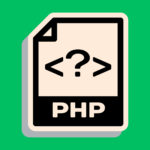In today’s highly competitive insurance business, having a user-friendly and feature-rich mobile app can give companies a major edge over the competition. An insurance application minimum viable product (MVP) helps insurers to get a basic but working app to market quickly and start collecting user feedback to iterate and improve the product.
In this article, we will walk through the key steps and factors when building an insurance application MVP.
Understanding the Problem Space
The first step is always to fully understand the problem space you are working in. This includes research into the insurance industry, the competitive environment, challenges policyholders face, and pain points an app can possibly solve.
Some key things to ask:
- What are the biggest frustrations for customers when working with insurers today? How can an app ease and improve this?
- What perks do policyholders expect to see in an insurance app? What joys and shocks can you include beyond basic expectations?
- How are your rivals fighting insurance apps? What traits or methods can you emulate or improve upon?
- How can the app make the claims process easier and cut time to payment?
- Can the app allow new insurance models such as usage-based or on-demand insurance?
Getting insight into these areas will help you create the right product needs for your MVP.
Defining the MVP Feature Set
Once you have a good understanding of the market context and user wants, the next step is to define the minimum feature set for the first MVP version of the app.
Remember, the key goal of an MVP is to release an early product with just enough features to be usable, so you can gather initial user feedback to support your assumptions and product direction.
Some important features your insurance app MVP should likely include:
- User account creation and management
- Policy control panel
- Premium payments and billing
- Claims entry and tracking
- Customer help contact choices
Keep the first feature set very lean. You can always build on it after getting those initial customer inputs post-launch. Resist the desire to cram too many bells and whistles into your MVP.
UX/UI Design
Creating a straightforward, user-friendly, and visually appealing UI/UX design is important for your insurance app. This is especially important for the MVP, as you want to make a strong first effect with users downloading the app for the first time.
Some best practices to keep in mind for your UI/UX design:
- Follow platform-specific design standards – this means iOS Human Interface standards for an iOS app and Material Design principles for Android.
- Use a clean, minimalist style. Avoid confusion or overwhelming readers with too much information.

- Ensure text is readable, buttons and clickable elements are clearly outlined, and there is sufficient contrast between elements.
- Facilitate seamless movement between parts of the app. Maintain uniformity in UI styles.
- Provide indicators, loading animations, and error message feedback to users during processes like making claims or payments.
- Include dashboard summaries and alerts to update users on important information like insurance expiration, payment due dates, or claim status changes.
Development and Testing
With UX/UI design complete, the next step is to build out the insurance app MVP features. Your developers should turn design mocks into real app code using standard mobile frameworks like React Native or native languages such as Swift for iOS and Kotlin for Android.
Be sure to fully test the app on both frontend and server. Some key testing areas:
- Core feature testing – Triggers the right app events under different use case scenarios e.g. policy buy, claims submission.
- UX testing – Testing UI parts respond to user input as expected. All buttons, links, problem messages work properly.
- Performance testing – Simulate load with multiple concurrent users to find memory leaks, lag, crashes.
- Security testing – Penetration testing and solving flaws.
- Accessibility testing – Ensure compliance with accessibility rules for disabled users.
Any problems found should be fixed before releasing the MVP.
Release and Gathering Feedback
With development and testing complete, you’re now ready to get your insurance app MVP to market! This is a huge milestone, but remember – the job doesn’t stop here.
Post-release, you need to closely watch user engagement, comments, and sentiment around the app. Some ways to gather insights:
- In-app user feedback polls – Ask people questions to gauge product-market fit.
- App store scores and reviews tracking.
- App store keyword and review tracking.
- Customer help response analysis.
- User data on services utilized.
Feed insights back to your product team to build out a priority list of changes and new features for the next app update.
Continuous Iteration
An MVP marks the beginning of a constant process of iteration and growth, not the end.
Use comments gathered from your initial release to continually add new features and improve the UX. This includes:
- Addressing pain points made by users.
- Building out tools that see high usage.
- Removing or changing features with low usage.
- Optimizing user flows.
- Performance improvements.
- Adding support for new insurance items or models.
- Expanding to new platforms like computers or gadgets.
- Integrating new tools like artificial intelligence.
- Localization for new geographical places.
Set a regular release cycle, keeping speed and agility to keep improving the product. This constant process of testing with users, learning and iterating will help improve and mature your insurance app over time.
Warm up
Developing a popular insurance app MVP takes careful planning, design, development, and constant refinement driven by user feedback. Following the process explained here will help you build and keep ongoing momentum:
- Deeply understand the problem space and customer wants.
- Carefully describe the basic feature set for your first release.
- Create a simple, visually appealing UX/UI.
- Develop and thoroughly test the app features.
- Release the MVP then closely watch user feedback.
- Iterate continuously to improve and grow the product.
Building a great insurance app is a run, not a race. Take it step-by-step and keep users at the heart of product decisions along the way. Adopting this user-centric, feedback-driven way will help ensure your insurance app MVP delights customers and achieves product-market fit.





